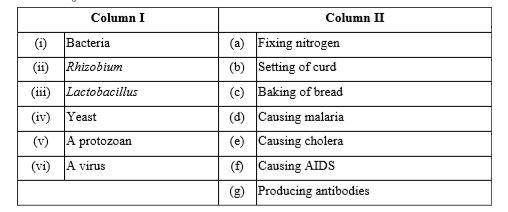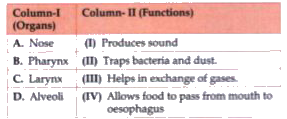Match the columns : -
The correct Answer is:A
To solve the matching question, we will analyze each organism in Column I and determine its corresponding mode of reproduction from Column II.
1. Identify the Organism: Penicillium
- Penicillium is a type of fungus known for reproducing asexually through structures called conidia.
- Match: 1. Penicillium - C. Conidia
2. Identify the Organism: Agave
- Agave is a succulent plant that reproduces asexually through bulbils, which are small bulbs that can grow into new plants.
- Match: 2. Agave - B. Bulbils
3. Identify the Organism: Water Hyacinth
- Water Hyacinth is an aquatic plant that reproduces asexually by offsets, which are side shoots that can develop into new plants.
- Match: 3. Water Hyacinth - A. Offset
4. Identify the Organism: Hydra
- Hydra is a freshwater organism that reproduces asexually by budding, where a new individual grows from a bud on the parent organism.
- Match: 4. Hydra - D. Buds
Final Matches:
- 1. Penicillium - C. Conidia
- 2. Agave - B. Bulbils
- 3. Water Hyacinth - A. Offset
- 4. Hydra - D. Buds
Summary of Matches:
- 1. Penicillium → C. Conidia
- 2. Agave → B. Bulbils
- 3. Water Hyacinth → A. Offset
- 4. Hydra → D. Buds
- Penicillium is a type of fungus known for reproducing asexually through structures called conidia.
- Match: 1. Penicillium - C. Conidia
- Agave is a succulent plant that reproduces asexually through bulbils, which are small bulbs that can grow into new plants.
- Match: 2. Agave - B. Bulbils
- Water Hyacinth is an aquatic plant that reproduces asexually by offsets, which are side shoots that can develop into new plants.
- Match: 3. Water Hyacinth - A. Offset
- Hydra is a freshwater organism that reproduces asexually by budding, where a new individual grows from a bud on the parent organism.
- Match: 4. Hydra - D. Buds
- 1. Penicillium - C. Conidia
- 2. Agave - B. Bulbils
- 3. Water Hyacinth - A. Offset
- 4. Hydra - D. Buds
- 1. Penicillium → C. Conidia
- 2. Agave → B. Bulbils
- 3. Water Hyacinth → A. Offset
- 4. Hydra → D. Buds
Topper's Solved these Questions
Similar Questions
Knowledge Check
Match the Column I and Column II.,B
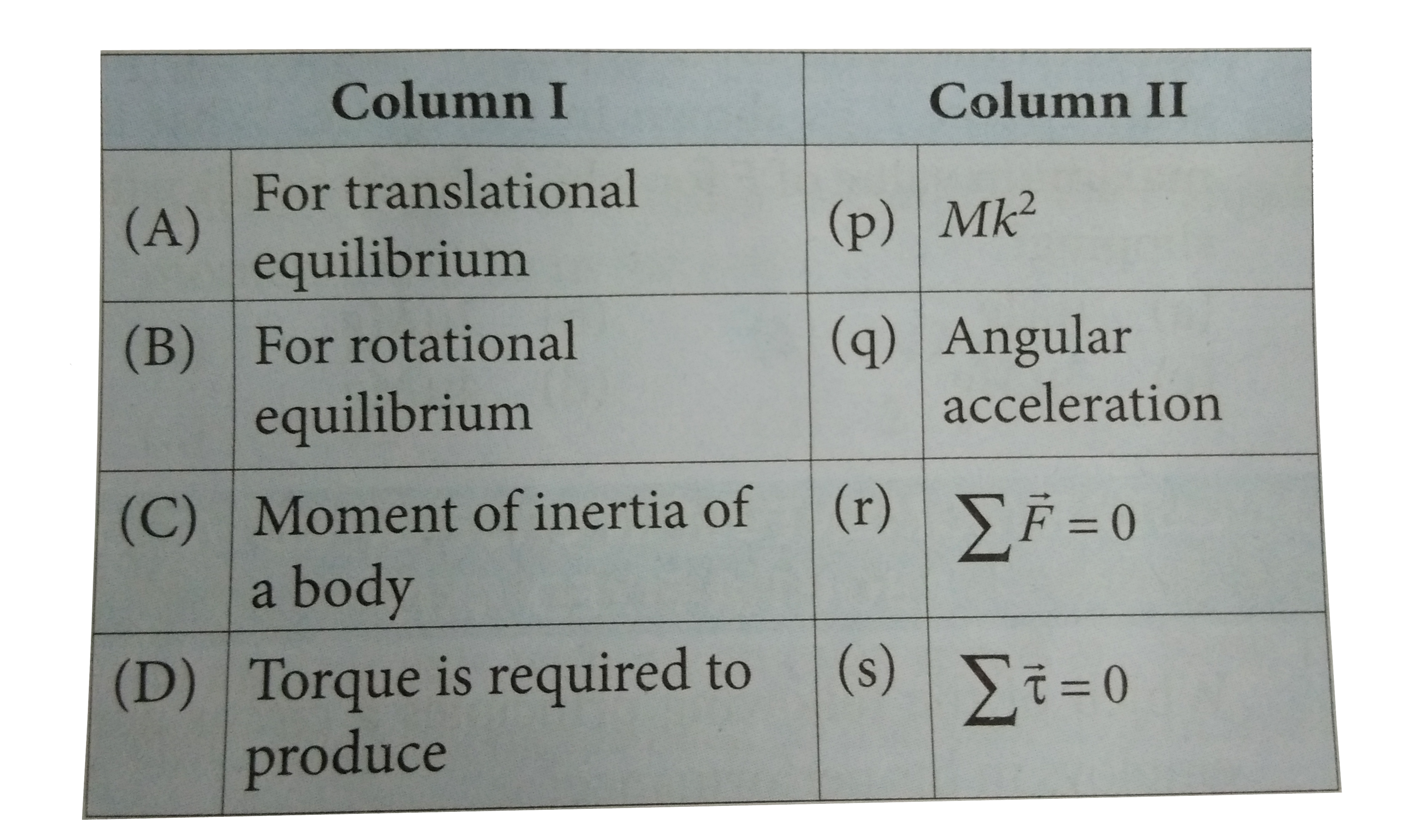 AA-p, B-q, C-r, D-sBA-q, B-r, C-s. D-pCA-r, B-q, C-p, D-pDA-r, B-s, C-p, D-q
AA-p, B-q, C-r, D-sBA-q, B-r, C-s. D-pCA-r, B-q, C-p, D-pDA-r, B-s, C-p, D-qMatch item in column I with those given in column II. Column 1
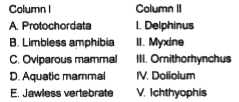 AA-V, B-IV, C-III, D-I, E-IIBA-IV, B-V, C-II, D-I, E-IICA-IV, B-V, C-III, D-II, E-IDA-V, B-III, C-I, D-II, E-IV
AA-V, B-IV, C-III, D-I, E-IIBA-IV, B-V, C-II, D-I, E-IICA-IV, B-V, C-III, D-II, E-IDA-V, B-III, C-I, D-II, E-IVMatch the following Columns.
Column IColumn IIA. Mercury1. PlumbismB. Lead2. MinamataC. Cadmium3. Itai-itaiD. Hydrocarbon4. CancerAABCD2134BABCD1234CABCD2314DABCD2143
Match the organs in Column I with the words listed in Column II.
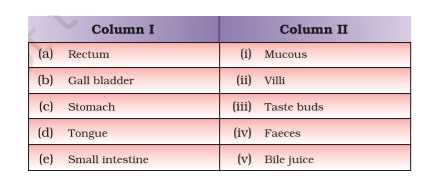
View SolutionMatch the organisms in Column I with their actions in Column II .
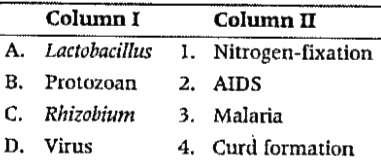
The correctmatching is
View SolutionMath the following Columns.
Column IColumn IIA. Eutrophication1. Rise in sea levelB. Biomagnification2. Water hyacinthC. Terror of Bengal3. Increase of quantity of pollutant at successive trophic levelsD. Greenhouse effect4. Enrichment with nutrients
View SolutionMatch column I with column II and select the correct option from the codes given below.
Column IColumn IISponge(i)TuberYeast(ii)OffsetPotato(iii)GemmulesWater hyacinth(iv)Budding
View SolutionMatch the Column I with Column II -
Column I Column III. Endothermic animalsA. Angler fishII. Ectothermal animalsB. MammalsIII. Organisms of benthonic zoneC. Amphibia, reptiles
View Solution

